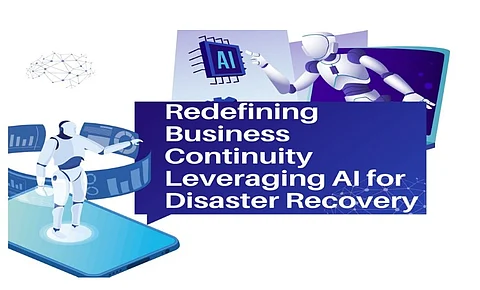

In today’s rapidly evolving digital landscape, ensuring business continuity is more critical than ever. Organizations face increasing risks from natural disasters, cyberattacks, and system failures, making disaster recovery a core component of strategic planning. Sandeep Kumar Nangunori explores the transformative impact of artificial intelligence (AI) on disaster recovery strategies, focusing on innovations that enable organizations to mitigate risks, enhance resilience, and improve recovery times. His work includes discussion on AI-driven technologies changing the processes of disaster recovery, empowering organizations to take care of data security, optimizing the resources, and scaling up systems in an interconnected world.
Disaster prevention using AI predictive capabilities is changing everything that organizations could analyze potential risks even before they happen. Advanced models of pattern recognition can process huge datasets with 96.3% accuracy in anomaly detection. These predictive systems cut false positives by over 75%, hence avoiding costly failures and improving proactive maintenance. The ability to predict failures up to 72 hours in advance allows organizations to take quick action, avoid downtime, and minimize the potential impact on operations. The tools enhance decision-making by providing actionable insights, empowering teams to strengthen operational reliability.
AI-powered automation is the new wave of revolutionizing disaster recovery by reducing man-in-the-middle intervention and reducing response times. Intelligent priority assignment systems dynamically distribute resources, decreasing downtime for key applications by over 82%. AI-driven orchestration of recovery reduces hours into minutes; MTTR for several organizations has been lowered to 37 minutes. It streamlines processes, optimizes resource use, and maximizes system uptime. Another thing is that automation allows organizations to have predefined recovery protocols in place, thus making recovery efforts consistent and allowing IT teams to focus on strategic tasks.
Through the advanced ability of AI, classification, and storage optimization for data backup have seen a big change. By automated systems achieving 95.8% categorization accuracy for the data, it ensures a reduction of up to 72% for storage footprints and improves access for data. Based on real-time adjustments to requirements by machine learning algorithms, the dynamic retention policy reduces storage cost to 64.8% with better resource use. AI-powered scheduling of backups achieves a 99.995% completion rate. This significantly reduces the impact of backups on production systems and maintains compliance. These efficiencies protect critical data, enhance cost-effectiveness, streamline processes, and ensure operational efficiency, all of which empower organizations to maximize their resources in preparation for the future.
Incorporation of AI in disaster recovery structures requires a methodical approach along with strong governance. Organizations employing systematic approaches have a success rate of 82.7% whereas those which do not possess structured methodologies experience only a 31.4% success rate. Pilot programs and phased rollouts will reduce risks, and integration will be done in minimal disruption with the existing system. AI in monitoring compliance slashes times to prepare for audits by over 90% while enhancing continuity operations. Integration of AI in continuity planning enhances an organization's capability to quickly recover from anticipated as well as unforeseen challenges.
AI-driven disaster recovery enhances operational efficiency and environmental sustainability. Organizations can maximize resource utilization, thus reducing energy consumption by 45%, significantly reducing their carbon footprint and operational costs. Corporate sustainability goals are supported through advanced compression and storage management techniques, thereby reducing costs. These strategies resonate with global environmental priorities, offering a balanced approach between financial efficiency and ecological responsibility. As more businesses adopt sustainable practices, AI becomes indispensable in the pursuit of both financial and environmental objectives.
The coming of quantum computing, edge computing, and blockchain technologies will radically transform the nature of disaster recovery processes. Quantum-assisted machine learning models improve predictability, therefore lowering undetected threats, downtime, and operational inefficiencies. Edge computing allows for the processing of data at the edges; hence latency is lowered, processing times increased, and quick responses given to critical incidents and emergencies are realized. Blockchain ensures data integrity with tamper-proof audit trails, strengthening compliance, improving trust, and safeguarding critical recovery processes. These advancements promise faster, more reliable recovery solutions, equipping organizations with innovative tools to navigate an increasingly complex and dynamic digital environment with enhanced confidence and resilience.
In conclusion, the research presented by Sandeep Kumar Nangunori shows that with AI-based solution, disaster recovery is made an active, effective, and environmentally friendly process. With the application of predictive analytics, automated orchestration, smart data management, and new kinds of recovery architectures, businesses achieve unparalleled levels of resilience, operation excellence, and reduced downtime. As such, not only are the technologies applied but also support and prepare for sustainability goals for organisations. As AI technologies emerge, they represent the core heart of business continuity strategies, whereby organizations are fully empowered to leverage their competitive strength and innovation against a changing international landscape.
